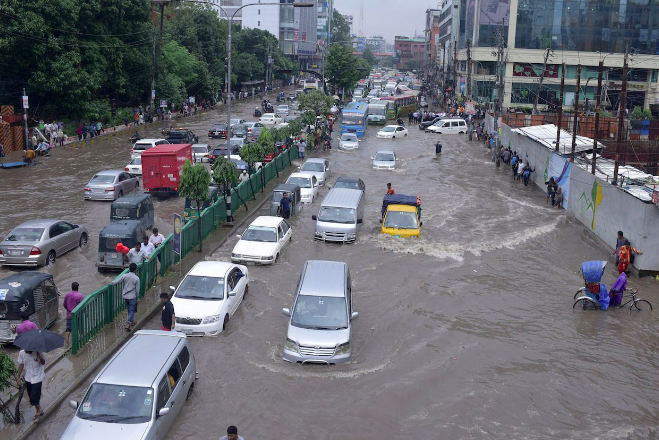Mother Earth is dying and we are only furthering her demise. Not only that, but we are creating an environment and society that will soon be the rich versus the dead, according to Philip Alston, UN special rapporteur on extreme poverty and human rights, in his report. “There is no shortage of alarm bells ringing over climate change, and an increase in biblical-level extreme weather events appear to be finally piercing through the noise, misinformation, and complacency, but these positive signs are no reason for contentment,” Alston said. “A reckoning with the scale of the change that is needed is just the first step.”
Alston is quick to call out government leaders, like President Donald Trump, about how complacent they are being concerning environmental issues. Alston states, “Somber speeches by government officials have not led to meaningful action and too many countries continue taking short-sighted steps in the wrong direction.” Alston’s report is not only a call to action—it is a warning.
Alston deems that with climate change will come “climate apartheid”, meaning “the wealthy pay to escape overheating, hunger and conflict while the rest of the world is left to suffer.” Alston states that, “while people in poverty are responsible for just a fraction of global emissions, they will bear the brunt of climate change, and have the least capacity to protect themselves.”
So not only is climate change affecting our environment, but it will affect our lives, threatening to undo the last 50 years of progress in development, global health, and poverty reduction,” Alston said. “It could push more than 120 million more people into poverty by 2030 and will have the most severe impact in poor countries, regions, and the places [where] poor people live and work.”
The risk of a climate apatheid also increases the possibility of “climate refugees”, or people who will have to seek lives elsewhere because the dying environment has made their current home unlivable. In a town in Gwynedd, Wales, Phil Black reports that the inhabitants of said town might become “climate refugees” given the rising sea levels and how close the town is to those levels. While there are people, such as Lisa Goodier, a project manager attempting to make preparations for those in the town to leave, many of the townspeople refuse to give up their properties or believe the scientific facts presented to them. They would rather stay until they truly have to leave.
It is perspectives like this that make our environmental crisis what it is today. The facts are there, the evidence has been proven, but if we continually ignore what is right in front of our faces, it will be too late. Well, it will be too late for anyone who is not rich because the rich will always have the ability to pay and get rid of anything that inconveniences them.
It is not just about our environment anymore, it is about us, as a human species. If we let things continue how they are, millions will die and it will only be time until we are all wiped out. Alston states, “The risk of community discontent, of growing inequality, and of even greater levels of deprivation among some groups, will likely stimulate nationalist, xenophobic, racist and other responses. Maintaining a balanced approach to civil and political rights will be extremely complex.”
We are responsible for our future. If we don’t take responsibility, or rather, if those who have the money and are making the problems do not take responsibility, it is not just our environment at risk. It is our humanity.
Nothing will change if those who have the money do not fix the issues. And by the looks of Alston’s report, we need change, now.
OLIVIA HAMMOND is an undergraduate at Emerson College in Boston, Massachusetts. She studies Creative Writing, with minors in Sociology/Anthropology and Marketing. She has travelled to seven different countries, most recently studying abroad this past summer in the Netherlands. She has a passion for words, traveling, and learning in any form.




















































